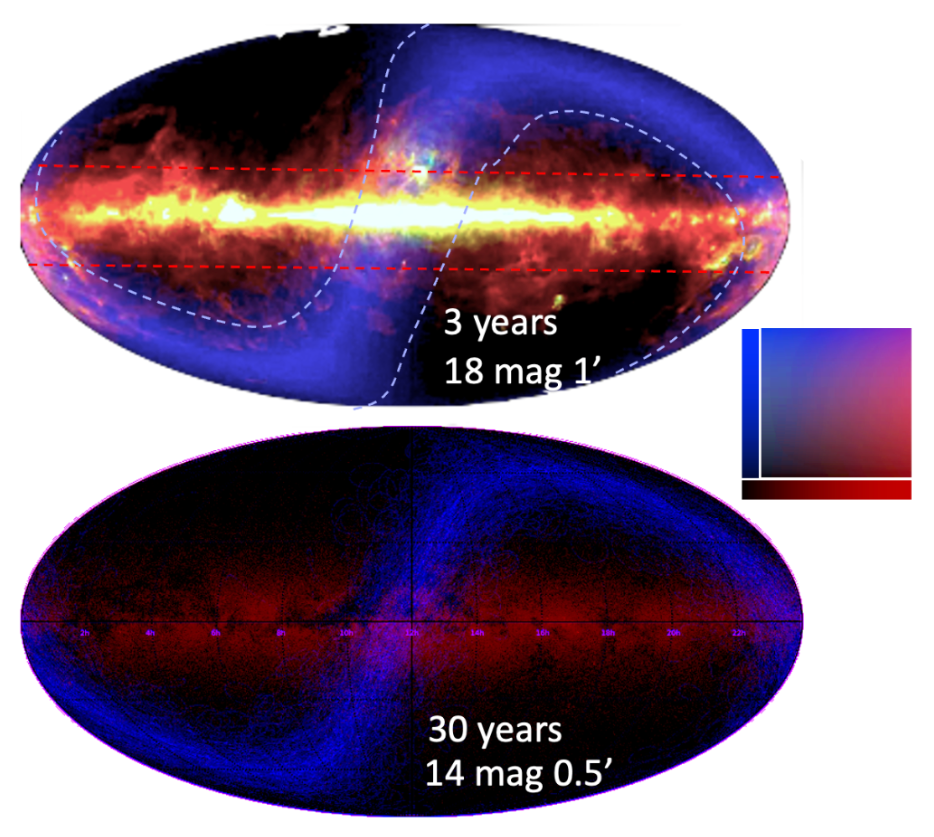High Resolution Imaging with a Moving Guide Star
Natural guide stars (NGS) are typically used as light sources for adaptive optics (AO), but the number of suitable potential stars covers less than 10% of the sky (C.E. Max.) Laser guide stars (LGS) have emerged as a potential alternative but still have limited utility. To expand current sky coverage, we cover the technique of using an asteroid as a reference star for high-resolution imaging. Online tools such as JPL Horizons allow us to analyze the future sky coverage of bright asteroids accurately. We prove that bright asteroids allow for high-value observations and cover portions of the sky not reached by NGS or LGS AO, and we explain the software that allows us to make these accurate predictions. Using this technique, we locked onto the asteroid 2334 Cuffey and used it as a reference star to observe UGC 4729, a galaxy with no suitable guide stars, in the highest resolution ever. This displays that a telescope is capable of precisely locking onto and tracking an asteroid while concurrently viewing nearby background targets. The evaluation of the results of our observation displays that UGC 4729 is a dual-core galaxy. We then discuss technical considerations for the use of AO with non-sidereal sources, including asteroids, and proposed artificial guide stars such as ORCAS, a mission that enables high image quality and angular resolution for imaging. We then show that the operational mode for ORCAS is valid for tracing with Keck, data acquisition, and data processing.
Key Takeaways:
- Natural guide stars are typically used as light sources for adaptive optics, but the number of suitable stars covers a very small part of the sky(<10%).
- Scientists have figured out how to utilize the Earth's mesosphere by exciting sodium atoms of the mesosphere. This alternative method is called a laser guide star, and although it seems to work well, it falls short because it still requires a fairly bright star for tip-tilt information (and the light from the mesosphere does not match the path of light from a star - this might be too much information).
- To expand the sky coverage of NGS and LGS and still acquire high-resolution images of science targets, we proposed the idea of using an asteroid as a reference star.

- Using the asteroid 2334 Cuffey, we observed UGC 4729, a galaxy with no nearby suitable guide stars, and captured it in the highest resolution thus far. After evaluating and processing the images, it appears that UGC 4729 is a dual-core galaxy.

Relation to ORCAS:
If we are able to use a bright asteroid for observations, ORCAS could be used as well. ORCAS moves slower than a typical asteroid, meaning that a telescope should have no problems tracking it. ORCAS is also significantly brighter than the asteroid used for this observation and should be suitable as a reference for AO systems. The last problem lies within the post-processing of the data, which we proved can be done with the images of UGC 4729.
